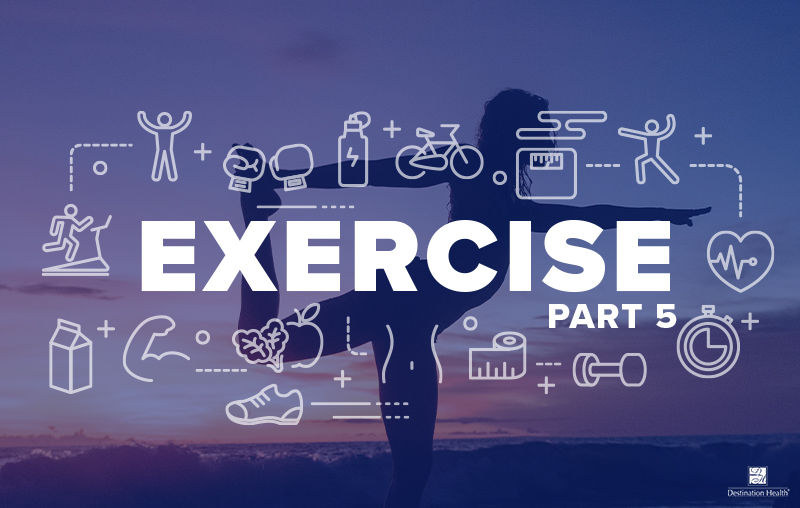PART V: BALANCE
Written by Dr. Carl DuCharme
Did you know that worsening balance is not simply an inevitable consequence of aging?
Balance refers to the ability to control and stabilize your body’s position.
Many things can cause declining balance as we age including loss of muscle mass, inner ear problems, changes in eyesight, development of chronic diseases and side effects from medications amongst others. Often the cause of balance problems is from a combination of these conditions. Loss of balance contributes to falls which causes a high degree of fractures, disability and death as we age. In fact, according to the CDC falls are the leading cause of injury-related death for ages 65 and older. Perhaps more striking is the rate of falls is increasing and specifically, the fall death rate amongst those age 65 and older has increased about 30% from 2009 to 2018.
Exercise combined with environmental-inspection and hazard-reduction programs can help reduce the number of falls. This blog will address the importance of exercise, more specifically balance training and its benefits in health and to reduce one of the leading causes of morbidity and mortality associated with aging.
Balance is a key component to physical fitness and should be included in a well-rounded exercise regimen that includes resistance training, aerobic conditioning and flexibility. The great news is that those who already perform those types of exercise are likely already benefiting from maintained and improved balance.
Health Benefits
Improving and maintaining balance as we age can improve mobility and prevent falls and associated injury. Performing balance exercises can also help improve posture. Many who have sedentary jobs or lifestyles develop hunched shoulders, reduced upper-back mobility and anterior pelvic tilt. This type of posture can lead to back pain, stiff neck and even thoracic kyphosis (appearing hunched over as we age).
This study showed balance training programs were effective in reducing the incidence of ankle sprains in athletes with and without a history of ankle sprains.
Types of balance
- Static – maintaining stability when stationary such as standing on one leg
- Dynamic – maintaining stability while moving such as riding a bicycle or hiking
How to test your own balance:
Here are 3 simple tests you can perform at home to evaluate your static balance:
- Feet Together. Stand with your feet together with your arms at your sides and close your eyes. You should be able to stand still for more than 30 seconds without taking a step, losing your balance or unnecessarily swaying.
- Stand and Reach. Stand with your feet together and arms held out forward in front of you. Now reach forward as far as you can without losing balance, falling or taking a step. You should be able to reach forward at least 10 inches.
- Stand On One Leg. Fold your arms across your chest so your hands are grasping the opposite shoulder. Now pick one foot off the floor and stand for at least 30 seconds without placing that foot back down, losing balance, hopping or taking a step.
If you cannot fully complete these tests you may have balance problems.
There are multiple other tests to evaluate balance. A standardized dynamic balance test found on the CDC website is called The Up & Go (TUG) assessment. You begin by sitting back in an armchair and see how fast you can get up from the chair, walk forward to a predetermined spot 10 ft from the chair, then walk back to the chair and sit down. The goal is to do this task in less than 12 seconds.
PLAN INTO ACTION
Start by evaluating your balance with the tests above or others you may know about. If you pass with flying colors, pat yourself on the back (while standing on one leg with your eyes closed!) AND write down your test results. Save these test results so you can compare your results when you perform these same tests on an annual basis. If you did not pass all of the tests do not worry, you now have a baseline to look back upon to chart your progress.
Depending on how well or poorly you did there a many options for improving or maintaining your balance. Unfortunately, there is no “one size fits all” program for everyone. If you did not do well on these tests I advise you to follow up with your physician as there may be consideration for formal evaluation and treatment with a licensed physical therapist.
For those of you able to complete some of the tests but not perfectly, I would evaluate your current level of overall fitness and exercise capacity. The problem may be a lack of fitness and would be best addressed by regular exercise incorporating resistance training and flexibility along with balance specific exercises. This cannot be overstated enough;
the foundation of good balance is appropriate strength and flexibility
If you have appropriate strength and flexibility your next step is dedicated balance training. Many options from balance boards to BOSU balls exist. These items can be purchased to use at home or are commonly found in most gyms or fitness centers. A quick YouTube search will reveal many videos from personal trainers such as this one that target balance, core and stability.
Health Tip
Balance and flexibility training should be performed in addition to regular resistance training and aerobic exercise in order to truly optimize your physical health. Remember that strength and flexibility are the foundation of good balance so try to prioritize them in your workouts. Often there is much overlap. You can incorporate balance training as part of your dynamic stretching routine to warmup prior to resistance training or cardio. Another option is to place it at the end of your workout with lighter weights or isolated stretching. Yoga or Pilates will incorporate balance, flexibility and body weight resistance all at once!

